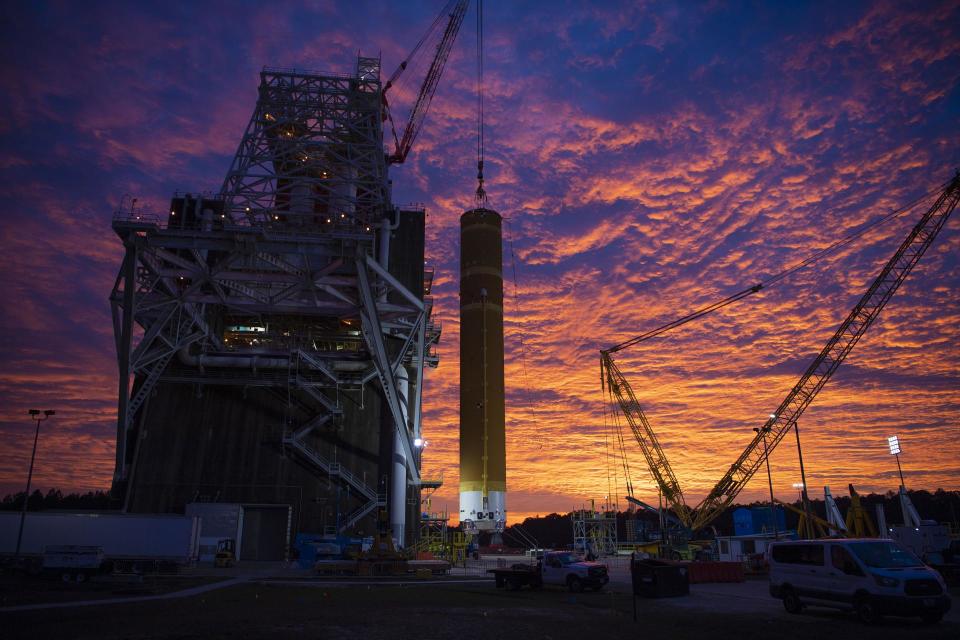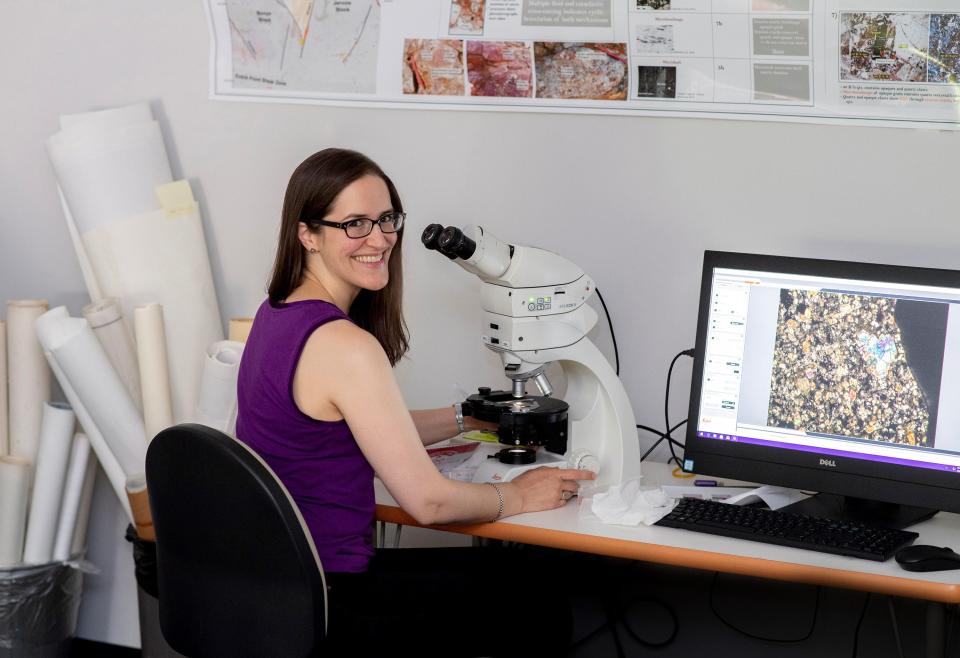Perplexing side of the moon: WCU prof works with NASA to help solve longtime lunar mystery
Amy Fagan, associate professor of geology at Western Carolina University, has worked at the college for nearly a decade. Over the course of her career, Fagan has also loaned her skills to several NASA initiatives, the latest of which aims to finally date an unusual region of the moon that has stumped scientists since its discovery in 1971.
Fagan was asked to join the team working on the $50 million DIMPLE instrument suite in July 2023. She explained in an interview with the Asheville Citizen Times that DIMPLE, short for Dating an Irregular Mare Patch with a Lunar Explorer, will investigate the longtime lunar mystery of an area called the Ina Irregular Mare Patch. The area was first photographed in 1971 in the Apollo 15 mission’s orbital images.
“The reason why it's cool is that here's a location on the surface of the moon that in some ways looks as if it's very, very old, but in other ways looks very, very young,” Fagan said. “And we don't know why.”

Fagan said samples returned by American lunar missions were between 3 and 3.6 billion years old. Chinese lunar missions returned further samples around 2 billion years old. The Ina Irregular Mare Patch, however, could potentially be less than 100 million years old, which Fagan described as the blink of an eye compared to existing samples. Uncovering the nature of this perplexing lunar feature could help scientists understand the volcanic and geological history of our moon – and more.
“If we see features like this other places, then we're going to be able to better understand those on other surfaces as well,” Fagan said. “So even though we're going to the moon, we're going to try to figure out what's happening on the moon, we can then apply that to other planetary surfaces throughout the solar system.”

A NASA news release said the DIMPLE instrument suite will utilize a rover and gripping instrument to collect between three and 25 samples. A spectrometer will help analyze this material, allowing scientists to determine the age and composition of Ina’s surface. This process will finally provide a definitive answer to the unknown timing of the volcanic activity that formed the patch.
NASA initiatives aren’t new to Fagan; Between 2020 and 2023, she served as chair for the Lunar Exploration Analysis Group. LEAG, chartered by NASA, provided information and analysis as needed for any relevant questions the organization hoped to investigate.
“What was great about that position was you you really interface a lot with people at NASA headquarters, and also with other members of the lunar science community,” Fagan said.
In January 2023, Fagan loaned her skills to NASA initiative JETT-3. She described the purpose of the initiative as a dress rehearsal for when astronauts on the Artemis III mission, planned for 2025 but delayed until at least 2026, become the first humans to set foot on the moon in more than 50 years.

“When the Artemis astronauts go to the south polar region of the moon, they will have already had traverse plans made,” Fagan said. “So where are they going to walk? What are they going to do at each stop? How many pictures are they going to take? What are they going to take the pictures of? How many samples are they going to collect? What types of samples? How big? All of that is predetermined.”
Unlike the Artemis III mission, however, DIMPLE will not put human beings on the surface of the moon. Instead, a NASA initiative called CLPS, or Commercial Lunar Payload Services, will contract a launch service to deliver the DIMPLE instrument payload to the lunar surface. A NASA news release said the DIMPLE delivery date is set for no earlier than the second quarter of 2027. They expect to determine the specific commercial launch services that will deliver DIMPLE to the moon in 2024.
“PRISM, the program that's funding this instrument suite, is very new,” Fagan said. “We were selected in the third cycle. So it's very new. The Commercial Lunar Payload Services is very new. Artemis I flew successfully at the end of 2022. We're gonna have Artemis II happening soon, and then Artemis III after that. So we're at this really, really exciting juncture for lunar science.”
This article originally appeared on Asheville Citizen Times: WCU prof Amy Fagan works with NASA to help solve lunar mystery

